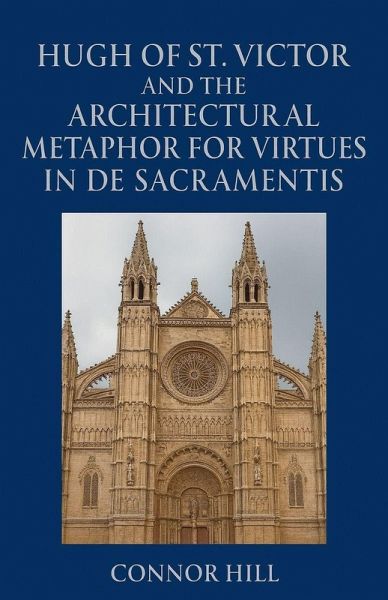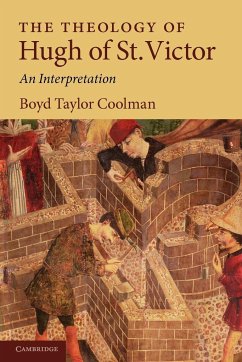
Hugh of St. Victor and the Architectural Metaphor for Virtues in De Sacramentis
Versandkostenfrei!
Versandfertig in 1-2 Wochen
16,99 €
inkl. MwSt.

PAYBACK Punkte
8 °P sammeln!
In the vibrant intellectual center of 12th-century Paris, a brilliant theologian developed a revolutionary framework for understanding moral life-one that continues to offer wisdom for our fragmented modern world. Hugh of St. Victor, teaching amidst the rise of Gothic cathedrals, conceived of virtue not as abstract theory or rigid rules, but as a magnificent spiritual architecture constructed within the human soul. This groundbreaking book reveals how Hugh's architectural metaphor for virtue provides a visually powerful and intellectually coherent approach to moral development that speaks dire...
In the vibrant intellectual center of 12th-century Paris, a brilliant theologian developed a revolutionary framework for understanding moral life-one that continues to offer wisdom for our fragmented modern world. Hugh of St. Victor, teaching amidst the rise of Gothic cathedrals, conceived of virtue not as abstract theory or rigid rules, but as a magnificent spiritual architecture constructed within the human soul. This groundbreaking book reveals how Hugh's architectural metaphor for virtue provides a visually powerful and intellectually coherent approach to moral development that speaks directly to contemporary challenges. As medieval builders transformed stone and glass into soaring cathedrals that integrated structural integrity with transcendent beauty, Hugh showed how diverse virtues could form a harmonious moral edifice-with faith as foundation, hope as vertical support, charity as unifying dome, and the cardinal virtues as interior spaces illuminated by contemplative windows. Drawing on extensive analysis of Hugh's original texts and their historical context, this study demonstrates how his architectural understanding of virtue offers a refreshing alternative to both relativistic ethics and rigid moralism. The metaphor naturally integrates elements that modern approaches often fragment: theory with practice, individual with community, ethics with aesthetics, and moral strength with spiritual beauty. For readers interested in virtue ethics, character education, spiritual formation, architectural symbolism, or medieval intellectual history, this book provides a compelling exploration of how an 800-year-old metaphor might help us rebuild moral coherence in our own time. By understanding virtue as spiritual architecture, we gain a powerful visualization of how diverse moral qualities can integrate into coherent character oriented toward both personal flourishing and common good. Discover how the master builder from St. Victor created a blueprint for virtue that transcends its medieval origins to address our distinctly modern challenges-offering wisdom for constructing lives of integrity and beauty in a world of moral fragmentation.










![Twenty-one Years of Mission Work in Toronto, 1886-1907 [microform]: the Story of the Fred Victor Mission Cover Twenty-one Years of Mission Work in Toronto, 1886-1907 [microform]: the Story of the Fred Victor Mission](https://bilder.buecher.de/produkte/66/66139/66139580n.jpg)

![Memorials of the Late Hugh Mair, D.D. [microform]: (sermons, Addresses, &C.) Cover Memorials of the Late Hugh Mair, D.D. [microform]: (sermons, Addresses, &C.)](https://bilder.buecher.de/produkte/65/65628/65628452n.jpg)